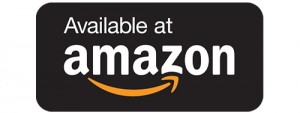Epic scriptures Ramayana and Mahabharata are categorized as Itihasa scriptures. Conventionally, we may consider Itihasa to mean the historical tales, but in Hindu theological narrations, the descriptions are often mixed with mythological and spiritual input47 to make them more forceful in their teaching value. Some have interpreted Itihasa as “Thus we should live.” This rendition imparts a higher moral value to these scriptures.
Rama is believed to be the seventh incarnation of Lord Vishnu. According to Vaishnavites, He descended on earth around 10,000 years ago to eliminate evil forces. However the historical concept by R.C. Majmudar describes 1950 BCE more likely. The story of Ramayana is the story of Hinduism; it is the true classic of all times. Literally, Ramayana means “the ways of Rama.” Rishi Valmiki first narrated it in twenty-four thousand verses, around 1000 BCE. From that time until today, this great tale of Lord Rama has been repeated in one form or another—a book, poetry, a dance drama called Ram Lila, movie, and a video serial. The Hindi version of Ramayana, Ram Charith Manas, written by Sant Tulsidas in the sixteenth century, and the earlier Tamil version, Kamban, have become equally popular.
Valmiki, who authored this great tale, was himself a dacoit—a highway robber—who reformed to become a devotee of Lord Rama (Ram Bhagat). The legend states that one day the great sage Narada confronted Valmiki and asked if his family, for whom he was committing the robberies, would share the burden of his sins. All the members of his family, including his wife, replied with an emphatic no. Valmiki then was immediately transformed, and he dedicated his life to the mission of writing the Ramayana. Thus, a Hindu would always be reminded that in the end, he would have to bear the consequences of his deeds alone.
In the Hindu Pantheon, Lord Rama is the “God of Propriety”. He would become the role model for appropriate and proper conduct throughout millennia. In every situation, however stressful or provocative, he remained calm and gentle. He never became angry and never lost his temper. He was always most respectful and kind. Even when his stepmother, Kaikeyi, became the cause of his great troubles and trials, he revered her, as a Hindu ought to revere his mother. He touched her feet and took her blessing before going into exile for fourteen years. He bore malice toward none. To his parents, his manners always remained exemplary. Toward Sita (the wife of Rama), he was most loving and courteous. From him we learn the unique teaching of ekapatni, which means only one wife for one man. When his brother, Lakshman, was seriously wounded, he actually cried. The bond of the two brothers would become the inspiration of brotherly love in the history of mankind. Toward Ravana, the wicked king, he remained persuasive until the very end, to wean him from evil. Only after it became clear that Ravana would never change did Rama take the bow and kill him, to uphold the cause of righteousness. Hindu society has referred to Lord Rama in the human form as Maryada Purshotam, the perfect man, who has remained an inspiration to become an ideal son, brother, husband, and ruler. He epitomized the spiritual virtues of truth, humility, and caring for others. Every situation in the Ramayana has a moral touch, and every character has an ethical significance.
The story of Ramayana is told as follows: Raja Dashrath was a pious king of Ayodha, in northern India. Toward the later period of his life, he decided to relinquish his throne in favor of the eldest of his four sons, Rama, and pass the remaining period of his life in prayers and meditation. This would be a common desire of any God-loving person in Hindu society. When Dashrath announced his desire to abdicate the throne and offer the crown to Rama, one of his queens, Kaikeyi, on the prompting of an evil-minded relative, Manthra, reminded the king of two favors that he had earlier promised her—that Rama should be sent into a forest for fourteen years and that her own son, Bharat, should be crowned king. On hearing this, Dashrath was so shocked that he died, even before Bharat, who was away visiting his maternal grandfather, returned. Rama, on the other hand, insisted that he would carry out the promises made by his father a long time ago. One’s word was the most precious duty, and a son was morally bound to uphold the honor of his father.
In the great tradition of the Hindu culture, Rama’s wife, Sita, prepared to go into the forest with him. Another brother, Lakshmana, also joined the long journey to serve his elder brother Rama.
When Bharat retuned from his grandfather’s home, he not only turned down the offer of the throne, but he also went to plead with Rama to return and become the king. Rama, however, remained firm in his decision, as he considered it a matter of uprightness (dharma) to abide by noble values and principles. Bharat then returned with a pair of Rama’s sandals, which he placed on the throne to represent the exiled prince; Bharat would only be performing on behalf of Rama until his return. Thus, the greed and evil of the queen Kaikeyi and her relative Manthra were fully compensated by the sacrifice and unselfishness of the son Bharat.
There are many tales of Sri Rama, Sita, and Lakshman during their long sojourn in the forest. I have chosen but one, of an old, low-caste woman, Shabri:
Shabri was a poor old woman in the forest, who got the chance of her lifetime to meet Lord Rama and play host to him. She picked berries, and then decided to taste them, one by one, to see which were sweet enough to be served to the Lord. Rama relished these berries more than anything else. The scriptures, the Veda Shastras, prohibit anyone from serving something that is contaminated—certainly not to Lord Rama. Shabri, however, was not knowledgeable of these formalities. She was a low-caste, simple-hearted woman of sincerity and devotion. Lord Rama accepted her service with great love and granted her the salvation (moksha).
Hindu religion is replete with such instances, when time and again the old conventions are broken. In the epic tales of both the Ramayana and the Mahabharata, the caste system is denounced. But this evil, however, prevailed in Hindu society for long time, emphasizing human weakness and vulnerability.
Ramayana has been the beacon of light for Hindus for millennia. Lord Rama’s sense of sacrifice and dedication toward his father is an object lesson for all mankind. The love among the brothers has been depicted with touching emotion, and the portrait of Sita as the ideal wife is greatly remembered in every household.
Lord Rama would become the role model for appropriate conduct. Hindu society has referred to Lord Rama in the human form as “Maryada Purshotam”, the perfect man, who has remained an inspiration to become an ideal son, brother, husband, and ruler. He epitomized the spiritual virtues of truth, humility, and caring for others. The legend of Shabri describes the major evolutionary step to cut across the caste system. To Hindus, Lord Rama has been a guiding star for every situation and circumstance in life, whenever they are in any difficult and hallenging situation.




